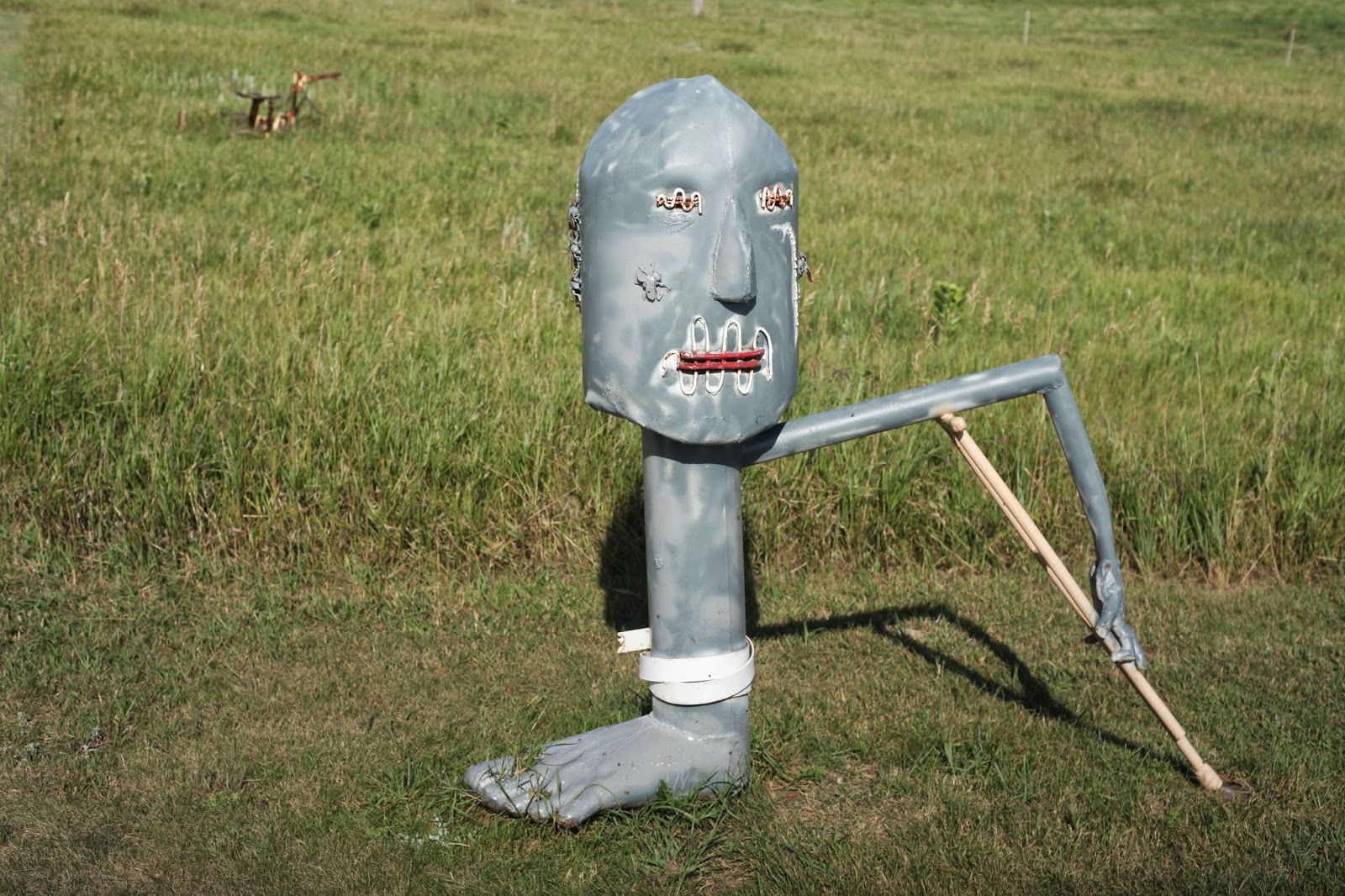 |
| This article in the Mobridge Tribune mirrors the importance afforded to these murals by many of the town's residents. |
|
 |
| First frost viewed from our host home in Glenham, SD |
With the oncoming chill of northern air, our host longitude reminds us of our
itinerant status here in Mobridge. As veteran Midwesterners versed in the skill of thrift, we quickly
swap-out our t-shirts for soft, western flannels at the local MMA thrift
store and resume our work.
 |
| Lingering gulls wait to greet us each morning as we head into town. |
The skies are now increasingly criss-crossed by flying V's of
migrating geese, squadrons of
pelicans, nearly astral sieges of meandering Sandhill cranes, and towards
evening,
troops of songbirds gliding invisible overhead.
Much like the changing of
seasons, our efforts on Howe's Mobridge murals have also shifted gears. The phases of
research and preparation now lead us into the more
tangible work of restoration.
When we first encountered Howe’s Mobridge murals, they were
muted, distorted, cracked, and thickly caked with several decades of
dust and dirt. Even as
compromised objects, these seventy two year old murals remain relevant
and vital and we are reminded of this each day as visitors stop in to share stories about the history of the murals, the area, and the artist.
For us, it is an honor to play a
small role in the re-saturation of these pictorial narratives.
 |
| Close up view of "Fool Soldier Rescue" prior to restoration. |
|
|
|
 |
| Amber compares color swatches on "Treaty Making". |
Decades ago, the skies of the the murals had been over-painted with a vibrant blue color, by an artist other than Oscar Howe. The yellowing which can be seen in the rough patches underneath the blue results from a lacquer-based floor varnish applied at some time after Howe's original painting and prior to the overpainting of the sky.
With the help of
Dr. Nowosielska, we reach back through layers of over-painting to
discover the original paint applied by Howe in 1942. What we find beneath, in the case of the
skies, is a much subtler gradient of colors. Muralist Amber Hansen
(pictured right) is testing swatches against small revealed
window of Howe's original paint. Once the original color has been matched, a
small batch of paint is mixed for the desired area.
Each of the five, north-wall skies required as many as nine custom mixed color variations.
 |
Mix master Nicholas creating and comparing color swatches. |
 |
| Mapping the colors. |
 |
The paint mixing station in all of its glory.
|
 |
| Using a gentle touch, Mobridge resident, Dennis Mosier removes bolts from a formerly attached basketball hoop on the Fool Soldier Rescue mural panel. Mosier and his masonry expertise were a great aid to the project. |
 |
| Working
together, Dennis and Dr. Nowosilska developed an aggregate mixture to
patch holes left over from the basketball hoops. The mixture was a
special recipe whose details shall never be revealed! |
 |
| Our good friend Dr. Margaret Nowosielska working some of her
conservation magic in an effort to remove layers of color-distorting
varnish from the murals surface. |
 |
| Amber begins the long awaited clouds for Sacajawea and Lewis and Clark |
 |
| Nicholas filling paint losses in "Christian Services". |
 |
| Nicholas on the second tier of our three story scaffolding. The Mobridge murals exceed 24' in height. |
 |
| Amber working on the frieze originally designed and painted by the Saul brothers of Fort Thompson, SD. |
 |
| Having conducted months of research on the artist, the region, and the murals, we set up an info sharing table so that curious visitors can indulge in the greater narrative of the murals. Many residents added to the info table with images and articles from their own collections. |
 |
| Klein Museum currator: Diane Kindt. |
The city of Mobridge and the kind people that call it home have become increasingly familiar as we find ourselves developing rich relationships with many of the towns residents who have become vital to our daily schedule. From the progressive politics of the local coffee shop to our dear friends in Wakpala and the abundant offerings from Diane Kindt at the local historical museum, it is very warming to see how quickly the town of Mobridge has woven us into the greater tapestry of their town-story. Likewise, as visitors embracing our itinerant residence within the region, we whole-heartedly slip-stich Mobridge into the greater narrative of our own ongoing tale.
 |
Stay tuned for our next post where we promise to have less words and more beautiful images! |
















































